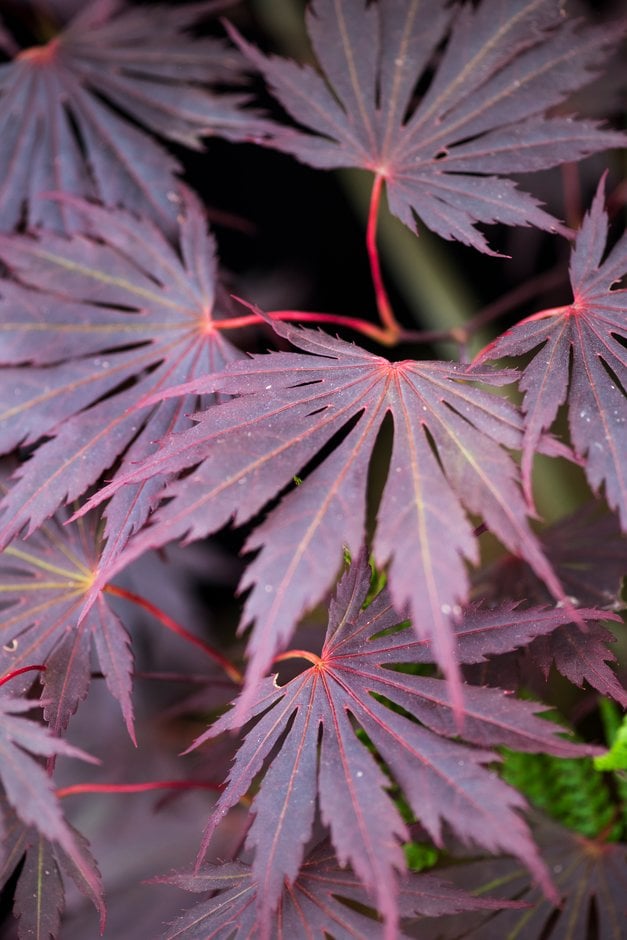Acer palmatum 'Yasemin' (M)
Japanese maple 'Yasemin'
A vigorous, upright-growing tree, up to 10m high, with large, deeply divided, shiny, seven-lobed or nine-lobed leaves, coarsely toothed on the outer half, the young leaves emerging dark red in spring, slowly ageing to bronze-green above and grey-green by late summer, and turning orange-red in autumn, and tiny, purple-red flowers in small, pendent corymbs in spring followed by red-winged fruit in late summer

Buy this plant
Size
Ultimate height
8–12 metresTime to ultimate height
20–50 yearsUltimate spread
4–8 metresGrowing conditions
Moisture
Moist but well–drainedpH
Acid, NeutralColour & scent
| Stem | Flower | Foliage | Fruit | |
| Spring | Red | Red | ||
|---|---|---|---|---|
| Summer | Red Bronze Green | Red | ||
| Autumn | Orange Red | |||
| Winter |
Position
- Full sun
- Partial shade
Aspect
South–facing or East–facing or North–facing or West–facing
Exposure
Sheltered Hardiness
H6Botanical details
- Family
- Sapindaceae
- Native to GB / Ireland
- No
- Foliage
- Deciduous
- Habit
- Columnar upright
- Genus
Acer can be deciduous trees or large shrubs with paired, often palmately-lobed leaves and small flowers followed by characteristic winged fruits. Many have fine autumn colour, and some have ornamental stems
- Name status
Accepted
How to grow
Cultivation
Grow in a place sheltered from cold drying winds and from late frosts, in full sun where its colours will develop best or in light dappled shade, in moist but well-drained neutral or acidic soil that does not dry out in summer or become waterlogged in winter, and protect roots with an open-textured organic mulch such as coarse bark; for more advice, see Japanese maple cultivation
Propagation
Propagate by grafting in late winter, or by budding in summer; semi-ripe cuttings, hardwood cuttings, or layering may also be successful
Suggested planting locations and garden types
- City and courtyard gardens
- Cottage and informal garden
- Low Maintenance
- Hedging and screens
- Banks and slopes
- Flower borders and beds
Pruning
Pruning group 1 (little or no pruning of trees and shrubs) and prune if necessary only from late autumn to midwinter
Pests
May be susceptible to Acer gall mite, aphids, caterpillars and horse chestnut scale
Diseases
May be susceptible to Verticillium wilt, Acer leaf scorch and honey fungus
Love gardening
Sign up to receive regular gardening tips, inspiration, offers and more
View our Privacy Policy
Get involved
The Royal Horticultural Society is the UK’s leading gardening charity. We aim to enrich everyone’s life through plants, and make the UK a greener and more beautiful place.